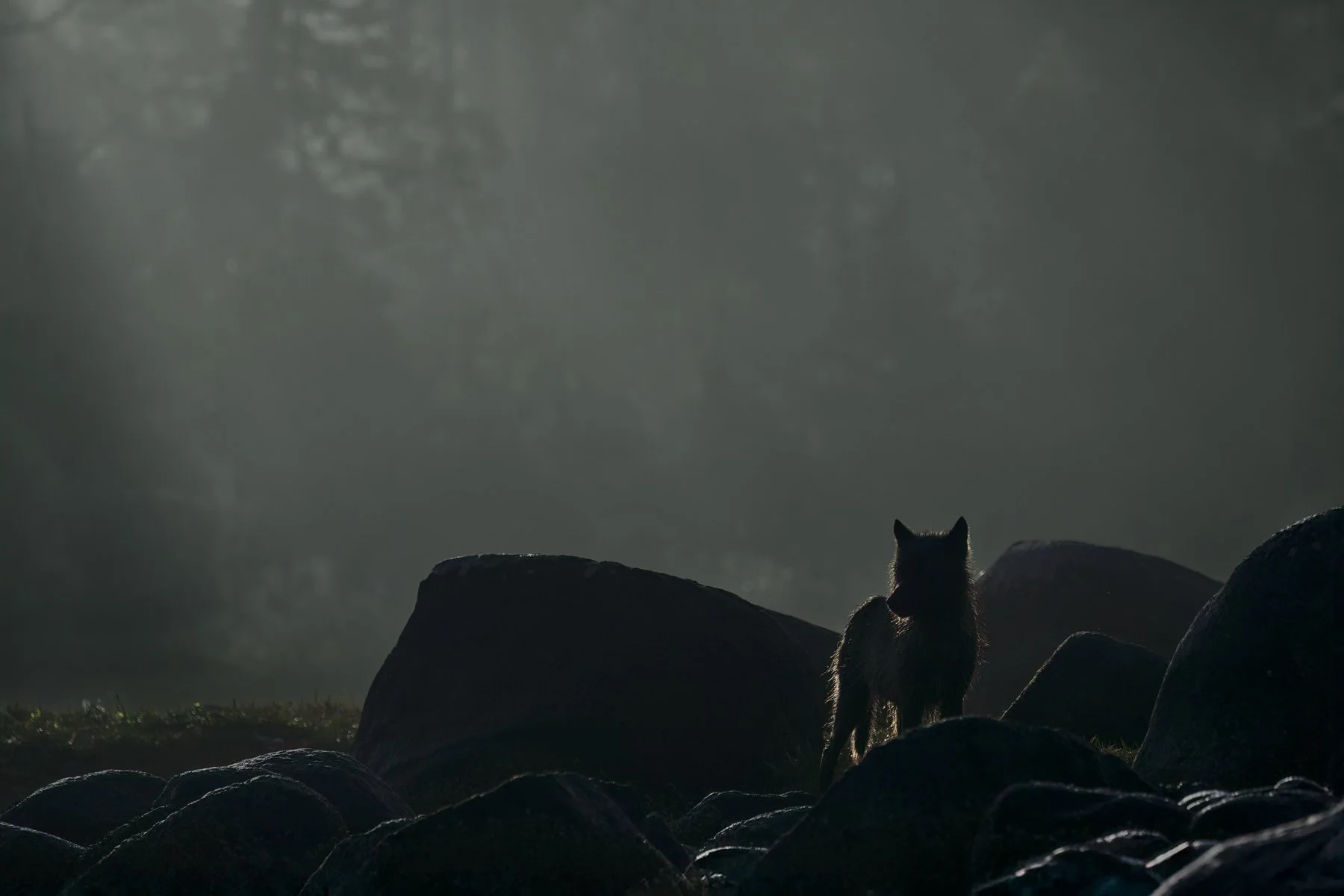Fishing Wolves
Once used centuries ago by First Nations people, remnants of ancient fish traps are now being utilized by coastal wolves.
The use of fish traps by First Nations people in British Columbia has a long history, dating back thousands of years. These traps were an essential part of Indigenous fishing practices, allowing communities to harvest fish sustainably while ensuring a reliable food source. Stone weirs were rock formations built in intertidal zones, designed to funnel and trap fish as the tide receded. These traps were particularly effective for spawning salmon. In the late 19th and early 20th centuries, the Canadian government outlawed Indigenous fish traps to favor commercial fisheries. The fish traps have since been dismantled or severely damaged hindering their effective use today.
Coastal wolves, also known as sea wolves, are a unique subspecies of gray wolves found exclusively on the remote coastal islands of British Columbia. They’re genetically distinct from their mainland relatives, with a lighter coat color, smaller size, and a narrower skull. They're powerful swimmers, known to cover distances of up to 13 kilometers (8 miles) between islands. Coastal wolves hunt along shorelines and unlike most wolves, rely heavily on seafood, including salmon, herring, clams, mussels, otters and seals. It’s estimated 25% of a coastal wolf’s diet is made up of fish.
Coastal wolves have learned to use the last ruins of these ancient fish traps to help capture salmon during the fall spawning season.
Directional Thoughts:
How do you convey the ingenuity of wolves utilizing traps created thousands of years ago by First Nations people?
Build out the relationship between the wolves and the traps (already have the relationship between wolf and salmon).
Show multiple pack members at various spots along the fish traps (Drone - Aerial)
Images showing the remains of the old fish traps. How they’re being used and salmon within the traps. (Drone - Aerial)
How is the bounty shared seeing not all wolves in the pack are fishing? How do the cubs get involved?
Some packs only eat the brains due to parasite concerns, how do these wolves get away with eating the entire fish?
Focus entirely on the single pack
Shot List:
Opener (“the hook”)
Scene Setter
estuary & stream where the salmon are spawning (early morning wide angle or aerial)
Aerial
fish traps - straight down (abstract image)
fish traps - include the horizon, larger coastal view
wolves utilizing the fish traps
salmon within the traps
Wide Angle
over/under of salmon stuck in the fish trap
over/under shot of salmon and wolf
camera completely under water level looking up at wolf on bank
half eaten salmon on stone of fish trap with wolves fishing in background
over/under of salmon retreating down river towards camera with wolf chasing
Conflict
Portrait
Detail / Abstract / Macro
salmon eggs. wolf print with salmon eggs
Special Moment / Emotion
Puppy with large salmon
Action / Motion
continue shooting slow shutter speeds
Closer
Potential “Money” Shots:
over/under salmon and wolf
















